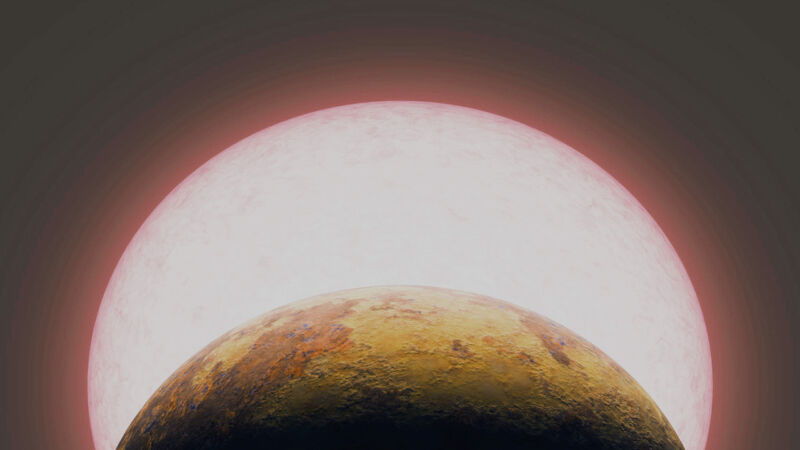Scientists have been working on models of planet formation since before we knew exoplanets existed. Originally guided by the properties of the planets in our Solar System, these models turned out to be remarkably good at also accounting for exoplanets without an equivalent in our Solar System, like super Earths and hot Neptunes. Add in the ability of planets to move around thanks to gravitational interactions, and the properties of exoplanets could usually be accounted for.
Today, a large international team of researchers is announcing the discovery of something our models can't explain. It's roughly Neptune's size but four times more massive. Its density—well above that of iron—is compatible with either the entire planet being almost entirely solid or it having an ocean deep enough to drown entire planets. While the people who discovered it offer a couple of theories for its formation, neither is especially likely.
A freakish outlier
The study of the new planet started as many now do: It was identified as an object of interest by the Transiting Exoplanet Survey Satellite (TOI, for TESS Object of Interest). TOI-1853 is a star somewhat smaller than our Sun, with about 0.8 times its mass. And there were clear indications of a planet near the star, now called TOI-1853 b. The planet orbits quite close to its host star, completing a full orbit in 1.24 days.
The researchers used that time to determine the distance at which the planet orbits. Based on a combination of that distance, the size of the star, and the amount of light blocked by the planet, it's possible to estimate the planet's size. That turned out to be about 3.5 times Earth's radius, meaning it's a bit smaller than Neptune.
On its own, that's not unusual; many Neptune-sized planets have been discovered. But the combination of size and proximity to the star is unexpected. It places it in what's called the "hot Neptune desert," where intense radiation from the star drives off a planet's atmosphere. Neptunes that reach the hot desert state end up stripped down to their rocky cores, which leaves them as super-Earths.
So what was TOI-1853 b doing in the desert? To find out, the researchers used ground-based observatories to track the movement of its host star as the gravitational pull of TOI-1853 b shifted as it moved through its orbit. The acceleration in the star's motion due to this pull can be used to estimate the planet's mass.
It turned out that TOI-1853 b has a lot of mass. It's estimated to be 73 times the mass of Earth or over four times the mass of Neptune. Pretty clearly, that means its composition must be very different from Neptune's.
Crunchy on the inside and outside?
The researchers involved in its discovery spend a fair bit of text describing just how much of an outlier this makes TOI-1853 b. There are planets with similar densities, but they're typically significantly smaller—the super-Earths formed by stripping away the atmosphere on a Neptune-like planet. There are planets with similar masses, but they're almost all twice as large and are likely to have extensive atmospheres and/or oceans. "It occupies a region of the mass–orbital [distance] space of hot planets that was previously devoid of objects, corresponding to the driest area of the hot-Neptune desert," the researchers conclude.



3175x175(CURRENT).thumb.jpg.b05acc060982b36f5891ba728e6d953c.jpg)

Recommended Comments
There are no comments to display.
Join the conversation
You can post now and register later. If you have an account, sign in now to post with your account.
Note: Your post will require moderator approval before it will be visible.